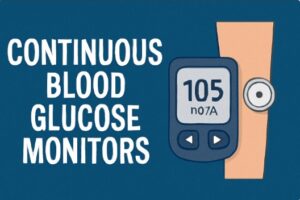For individuals with chronic illnesses, mobility issues, or age-related vulnerabilities, the option to receive medical attention without leaving the comfort of their home can be a true lifeline. In-home medical services provide timely and attentive care for high-risk patients while prioritizing their safety and overall well-being.
This type of personalized service helps reduce unnecessary travel and exposure to external health risks. Whether it’s for ongoing health monitoring or urgent concerns, having a trusted medical professional visit the patient in their own space ensures continuity of care and peace of mind. Let’s delve into Doctor at Home Dubai
Who Benefits Most from In-Home Visits?
In-home healthcare is especially helpful for those who have limited physical ability or weakened immunity. Individuals recovering from surgery, managing long-term health conditions, or facing age-related frailty can benefit significantly. The service also supports patients who require frequent checkups, but whose physical condition makes regular trips to a healthcare center challenging.
Patients dealing with:
Neurological conditions like Parkinson’s or Alzheimer’s
Cardiac conditions that require close monitoring
Respiratory illnesses needing oxygen support
Compromised immune systems
can all receive safer, more personalized attention from a professional right where they are most comfortable.
Creating a Safe and Comfortable Environment
The key to in-home medical care lies in delivering professional healthcare in a way that prioritizes patient safety. From the very first visit, the environment is assessed to ensure it supports safe mobility and hygienic practices. High-risk patients are often more susceptible to infections or complications, so preventing exposure and stress is a crucial part of the care plan.
In-home professionals usually follow strict hygiene protocols, carry essential diagnostic equipment, and keep patient records updated. They also coordinate with family caregivers to make sure everyone understands the treatment plan and ongoing care needs.
Personal Connection and Emotional Comfort
Aside from the clinical aspect, emotional comfort plays a big role in healing and wellness. Receiving care at home can ease feelings of anxiety, isolation, and discomfort that some high-risk patients experience in unfamiliar clinical settings. The familiar surroundings help them remain calm and cooperative during visits, which improves overall care outcomes.
The continuity of care from a familiar medical professional also builds trust. This relationship fosters open communication, allowing for a better understanding of symptoms, concerns, and progress over time.

Managing Chronic Conditions at Home
Chronic conditions often require frequent checkups, medication reviews, and symptom tracking. In-home care makes it easier to manage these tasks without disrupting the patient’s daily routine. With regular visits, high-risk individuals can get their vitals checked, medication adjusted, and overall health monitored effectively.
Ongoing support may include:
Monitoring blood pressure and blood sugar levels
Checking respiratory functions
Guiding physical therapy exercises
Assessing the need for any modifications to care routines
All of these steps help maintain health and prevent complications from escalating unnoticed.
Reducing Emergency Situations
By bringing healthcare to the doorstep, many potential emergency situations can be avoided. Early detection of warning signs is often easier when care is consistent and familiar. Healthcare professionals trained to work in-home can pick up subtle signs of trouble, such as behavior changes or physical discomfort, and act accordingly.
This proactive care approach minimizes the chances of hospital admissions, which is especially important for high-risk patients who could be vulnerable to infections or stress in crowded environments.
Supporting Family Caregivers
Caregiving for a high-risk loved one at home can be emotionally and physically demanding. In-home doctor visits offer much-needed support, helping caregivers manage responsibilities with greater confidence. Regular guidance from healthcare professionals ensures the caregiver is not alone and that their loved one is receiving the right care.
It also gives family members time to recharge and make informed decisions without feeling overwhelmed. Knowing that a trained professional is monitoring health conditions closely brings peace of mind to everyone involved.
Encouraging Better Treatment Adherence
One of the overlooked benefits of in-home care is the improvement in treatment adherence. Patients are more likely to follow through with treatment plans when they feel supported and are in a familiar environment. The stress of transportation and waiting rooms is removed, making it easier to stay on schedule with appointments and routines.
Professionals visiting at home also offer reminders and practical advice on how to take medication, follow dietary recommendations, and maintain healthy habits.
FAQs
Why choose in-home care for high-risk individuals?
In-home care helps minimize exposure to health risks and eliminates the strain of travel. It also allows for more personalized care, focusing on individual needs in a familiar setting.
Is in-home care suitable for long-term health conditions?
Yes, it is especially effective for managing long-term conditions that require regular monitoring, lifestyle adjustments, or treatment updates. The care provided is consistent and centered on the patient’s evolving health needs.
How often can a healthcare provider visit a high-risk patient?
Visit frequency depends on the individual’s health status and care plan. Some may require weekly visits, while others benefit from more regular check-ins to track symptoms and prevent complications.
Can family members be involved in the care process?
Absolutely. Family caregivers often work closely with healthcare professionals to ensure the treatment plan is followed. This team approach enhances safety, comfort, and quality of life for the patient.
What kind of health issues can be addressed during home visits?
A wide range of medical concerns can be managed during Doctor at Home in Dubai, including respiratory conditions, post-surgical recovery, blood pressure and sugar monitoring, and mobility issues. The focus remains on maintaining stable health and preventing emergencies.
Conclusion
Home-based medical care for high-risk individuals ensures that safety always comes first. By creating a comfortable and secure environment, maintaining consistency in care, and offering emotional reassurance, in-home visits provide a holistic solution to health management. For those who face challenges in accessing traditional healthcare settings, having a trusted professional come to their door offers not just convenience but a vital path to ongoing wellness and peace of mind.



